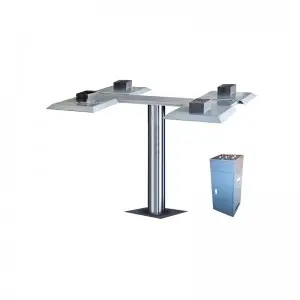Cylinder engines have become an integral part of our modern society, powering everything from cars to lawnmowers. Yet, many people remain unfamiliar with the inner workings and benefits of these remarkable machines. In this comprehensive guide, we will explore the intricacies of cylinder engines, their different types, and their numerous applications in various industries.
A cylinder engine, also known as a combustion engine, is a mechanical device that converts chemical energy into mechanical energy through the process of combustion. The engine’s core component is the cylinder, a cylindrical chamber where the combustion of fuel takes place. Inside the cylinder, a piston moves up and down, allowing air and fuel mixture to enter, ignite, and finally be expelled as exhaust gases.

Understanding the Fascinating World of Cylinder Engines: A Comprehensive Guide
Cylinder engines come in various configurations, most commonly as inline, V-shaped, or horizontally opposed. Each type has its unique characteristics and advantages. Inline engines, for instance, have their cylinders arranged in a straight line, typically in an upright position. This configuration is known for its simplicity, compact size, and low production cost. On the other hand, V-shaped engines have cylinders positioned at an angle, forming a “V” shape when viewed from the front. V-shaped engines are popular in high-performance vehicles, as they allow for more power output and smoother operation compared to inline engines. Horizontally opposed engines have cylinders facing each other in a horizontally positioned crankshaft. These engines are commonly used in aircraft and some sports cars due to their excellent balance, compact size, and low vibration.

Understanding the Fascinating World of Cylinder Engines: A Comprehensive Guide
Cylinder engines find applications in a wide array of machines. One of the most common examples is the automobile. Cars utilize either four-cylinder, six-cylinder, or eight-cylinder engines, depending on the desired performance and power. Four-cylinder engines are typically found in compact cars and provide a good balance between fuel efficiency and performance. Six-cylinder engines are commonly found in mid-sized and larger vehicles, offering improved power and acceleration. Eight-cylinder engines, also known as V8 engines, are often reserved for high-performance vehicles, delivering exceptional power and exhilarating speed.
Beyond the automotive industry, cylinder engines are also utilized in motorcycles, lawnmowers, boats, generators, and other machinery that requires internal combustion power. Their versatility and scalability make them suitable for a wide range of applications, from small handheld tools to large-scale industrial machinery.
Maintenance and care are essential to ensure the longevity and optimal performance of cylinder engines. Regular oil changes, air filter replacements, and spark plug inspections are recommended to keep the engine running smoothly. Additionally, monitoring coolant and oil levels, as well as maintaining the proper fuel mixture and compression, are crucial for efficient operation and preventing potential issues.

Understanding the Fascinating World of Cylinder Engines: A Comprehensive Guide
Advancements in technology have led to the development of more efficient and environmentally friendly cylinder engines. Hybrid vehicles, for example, combine electric and cylinder engines to maximize fuel efficiency and reduce emissions. Additionally, the introduction of direct injection systems and turbocharging has significantly improved power output and fuel economy, making cylinder engines even more appealing in today’s eco-conscious world.
In conclusion, cylinder engines play a vital role in powering our modern society. Understanding their configurations, applications, and maintenance requirements allows us to appreciate the complex machinery behind our vehicles, tools, and machinery. With ongoing advancements, cylinder engines continue to evolve, captivating engineers and enthusiasts alike with their efficiency, power, and versatility.Cylinder
